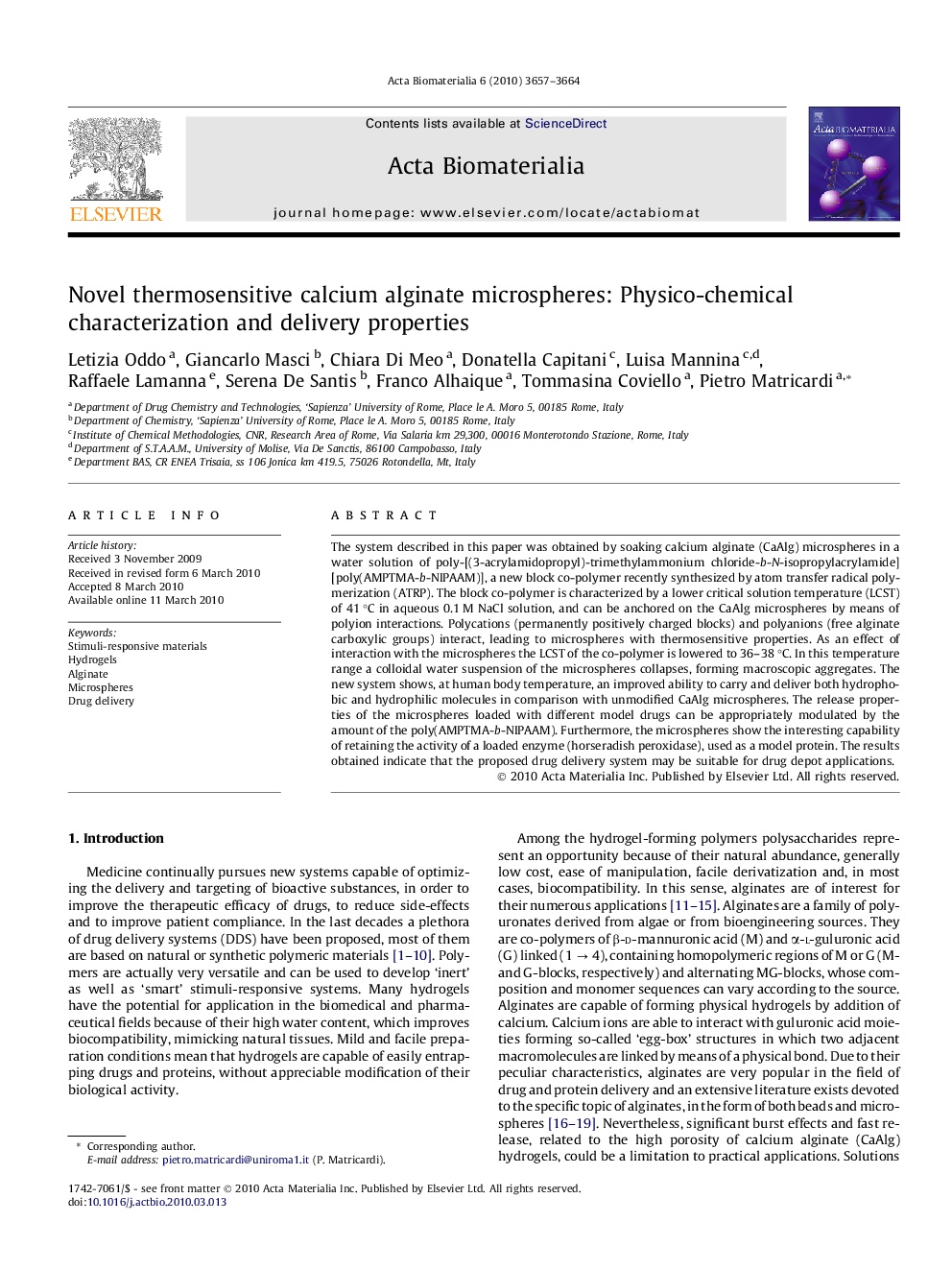| Article ID | Journal | Published Year | Pages | File Type |
|---|---|---|---|---|
| 2161 | Acta Biomaterialia | 2010 | 8 Pages |
The system described in this paper was obtained by soaking calcium alginate (CaAlg) microspheres in a water solution of poly-[(3-acrylamidopropyl)-trimethylammonium chloride-b-N-isopropylacrylamide] [poly(AMPTMA-b-NIPAAM)], a new block co-polymer recently synthesized by atom transfer radical polymerization (ATRP). The block co-polymer is characterized by a lower critical solution temperature (LCST) of 41 °C in aqueous 0.1 M NaCl solution, and can be anchored on the CaAlg microspheres by means of polyion interactions. Polycations (permanently positively charged blocks) and polyanions (free alginate carboxylic groups) interact, leading to microspheres with thermosensitive properties. As an effect of interaction with the microspheres the LCST of the co-polymer is lowered to 36–38 °C. In this temperature range a colloidal water suspension of the microspheres collapses, forming macroscopic aggregates. The new system shows, at human body temperature, an improved ability to carry and deliver both hydrophobic and hydrophilic molecules in comparison with unmodified CaAlg microspheres. The release properties of the microspheres loaded with different model drugs can be appropriately modulated by the amount of the poly(AMPTMA-b-NIPAAM). Furthermore, the microspheres show the interesting capability of retaining the activity of a loaded enzyme (horseradish peroxidase), used as a model protein. The results obtained indicate that the proposed drug delivery system may be suitable for drug depot applications.
